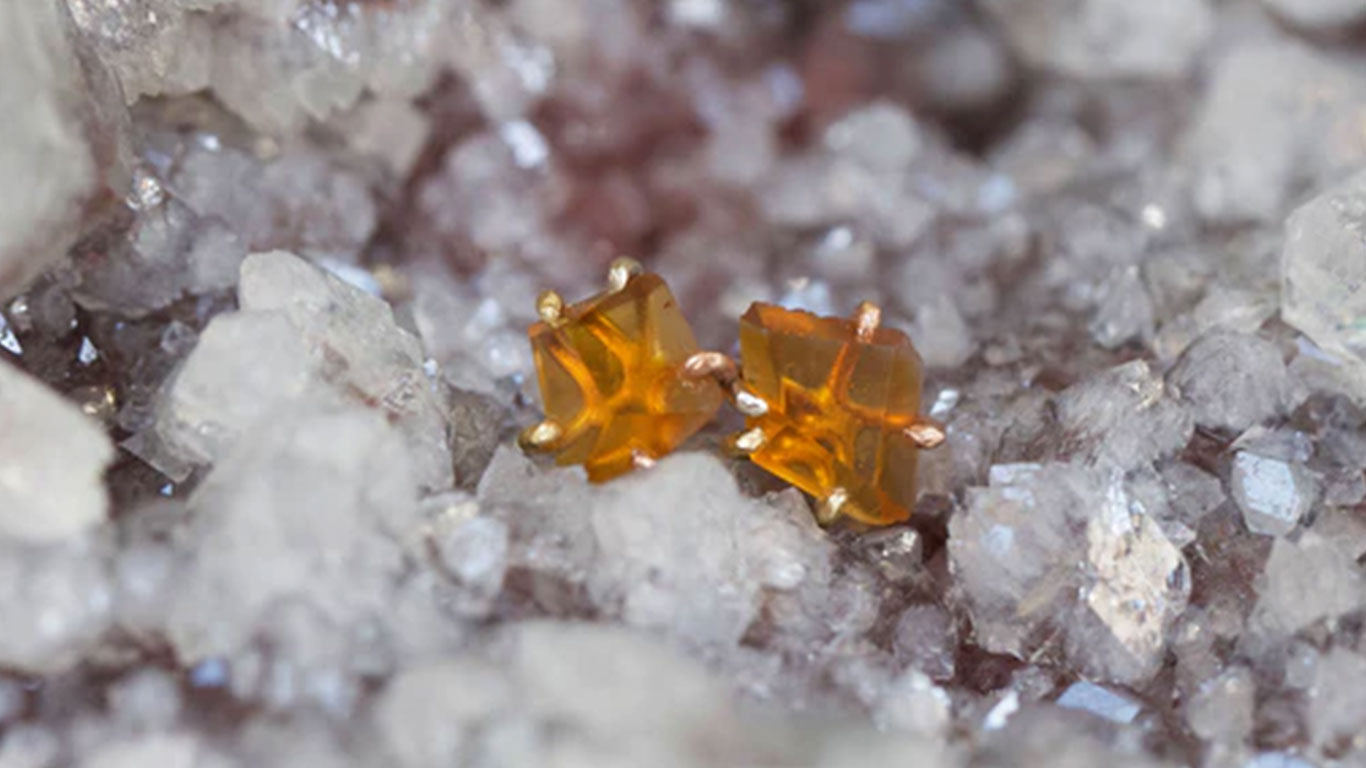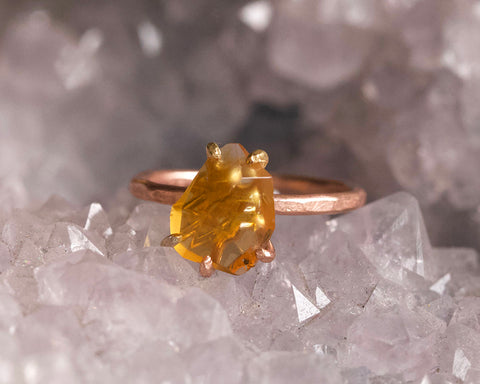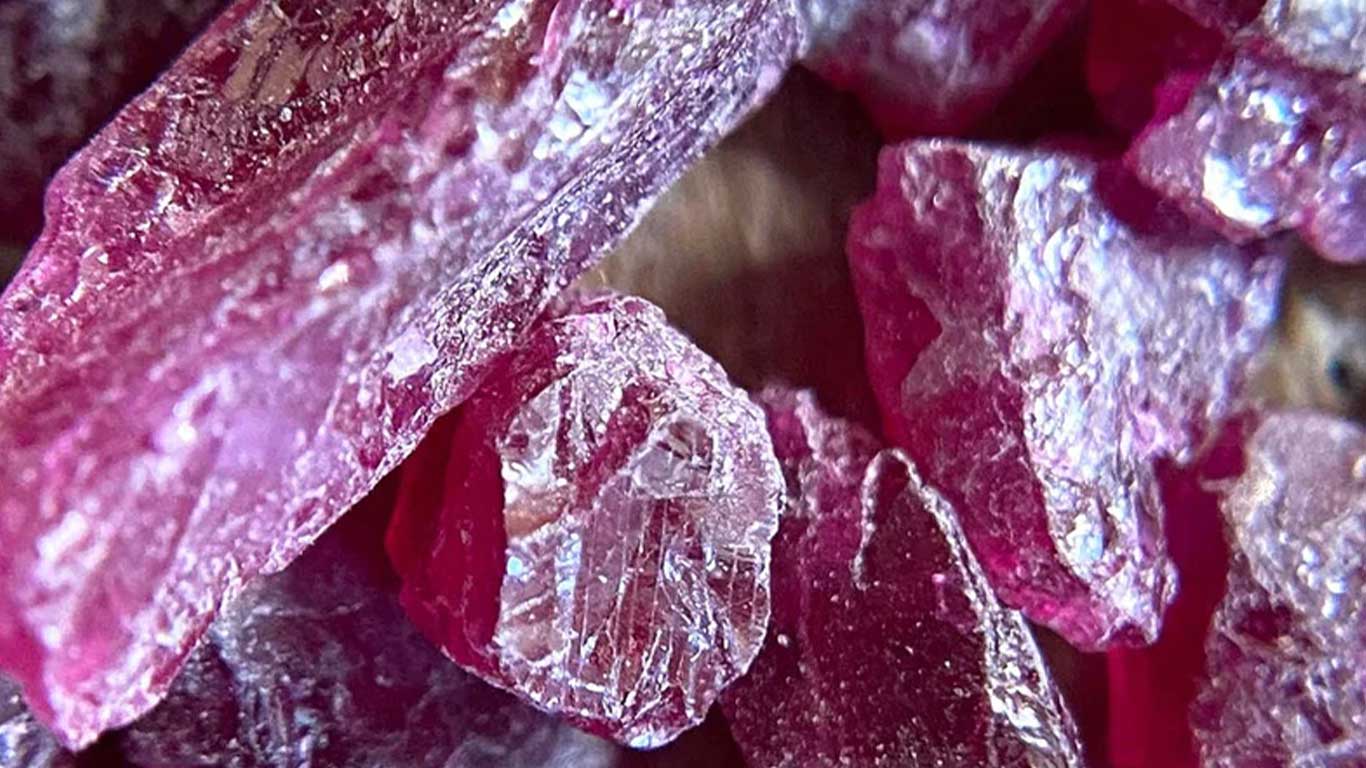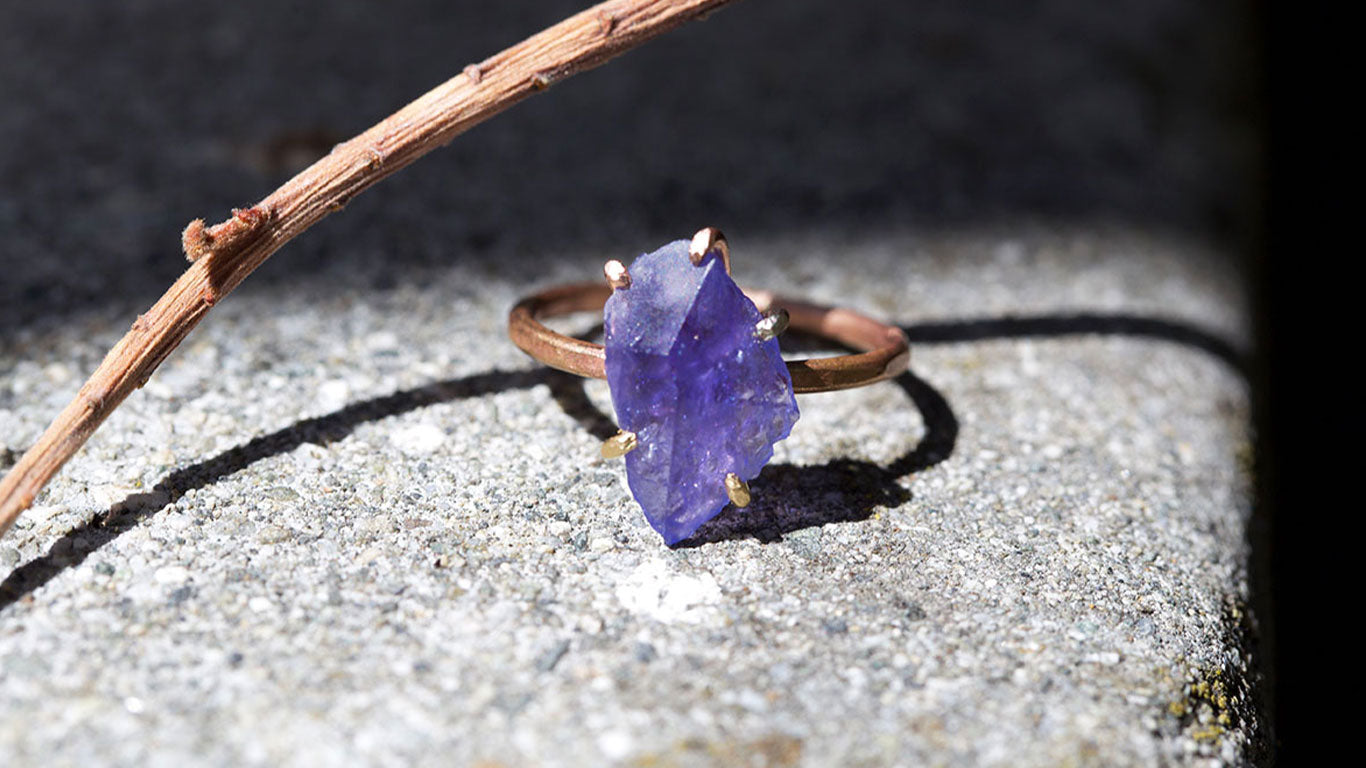
The Golden Story of Citrine Jewelry: Unveiling the Mysteries and Rich History of this Gemstone
Citrine History & Meaning: The Art Deco Gemstone
Citrine, the Merchant's Stone, was often overlooked because of its relative abundance, compared with better-known gems, like diamonds or rubies, but citrine jewelry history is fascinating and involves many cultures and peoples adorning themselves with citrine gemstones throughout the centuries. The peak of citrine popularity came during the Art Deco period and today citrine is the November birthstone.

Where is Citrine found?
Citrine belongs to the quartz family of gemstones. Citrine is a yellow Quartz, known for its autumnal pale yellow to light brown color hues. Natural citrine is rare, however, and the majority of citrine available on the market today is amethyst or smoky quartz which has been treated under intense heat to resemble citrine. The largest source of natural citrine is mined from Brazil and the Ural mountains.
The origin of the name citrine is believed to be the French word for lemon, 'Citron', as a nod to its citrussy hues. Citrine scores a 7 out of 10 on the Mohs scale, making it quite scratch resistant.
The origin of the name citrine is believed to be the French word for lemon, 'Citron', as a nod to its citrussy hues. Citrine scores a 7 out of 10 on the Mohs scale, making it quite scratch resistant.

Citrine and yellow topaz have often been mistaken for one another in the past, with crooked sellers mislabeling citrine as yellow topaz to make more profit. Both are yellow gemstones but citrine quartz is not as hard as yellow topaz. Pure quartz that has been treated to resemble citrine will not have a reddish cast, unlike genuine citrine.
Citrine Gemstone – Symbolism and Meaning
Citrine is known as the Merchant's stone because it resembles gold and has been thought to bring prosperity, wealth, and good fortunes. Citrine has been thought to cure ailments such as improving blood circulation, reversing degenerative diseases and liver problems. Others say citrine will calm tempers and rid oneself of evil thoughts.

Citrine History of Usage
Citrine has been found in ancient Egyptian archaeological sites because it was made into talismans by the ancient Egyptians to ward off spirits and for ornamentation. The gemstone was popular in ancient Greece during the Hellenistic age (300 BCE-150 BCE). The ancient Greeks preferred to use Citrine as a decorative gem, instead of jewelry pieces. The ancient Romans, ever influenced by the Egyptians and Greek cultures, were also fond of Citrine. Citrine was a common choice for intaglio carvings and was worn as signet rings by senior Roman authorities and later by Bishops of the Roman Catholic Church. Much later on, 17th-century Scottish warriors would affix citrine to the handles of their Claymore swords and their daggers.

Citrine was also popular with Queen Victoria, who was noted for her large jewelry collection. Queen Victoria was also enamored with Scotland, where the Balmoral Residence was built for her and decorated with citrine. Her love for both Scotland and the citrine gem cemented the idea of citrine being used for Scottish brooches and pins for kilts.
Popularity During the Art Deco Period
The Art Deco movement began in France in the 1910s, eventually spreading across Europe and the United States during the 1920s and 1930s, ending before the Second World War. The Art Deco period is characterized by luxury, elaborate designs, and symmetry, mixing inexpensive man-made materials like plastics with natural materials like gold or jade. Art Deco style was found in everything from art, and architecture to fashion and interior decoration.
Art Deco era jewelry saw a renewed appreciation of citrine, where once diamonds had ruled supreme, jewel-makers of the era wished to use multi-colored stones and end the reliance on diamonds alone. Broadway stars such as Joan Crawford were known for their elaborate citrine jewelry. Citrine pendants, earrings, necklaces, brooches, and even wristwatches became must-have jewelry pieces for the trendy.
Art Deco era jewelry saw a renewed appreciation of citrine, where once diamonds had ruled supreme, jewel-makers of the era wished to use multi-colored stones and end the reliance on diamonds alone. Broadway stars such as Joan Crawford were known for their elaborate citrine jewelry. Citrine pendants, earrings, necklaces, brooches, and even wristwatches became must-have jewelry pieces for the trendy.

Citrine Gemstone Continued
Although Art Deco eventually fell out of fashion, citrine's popularity has remained stable after World War II, with the stone continuing to be worn by royalty such as Kate Middleton, the Princess of Wales. Beautiful jewelry and the history of citrine are deeply intertwined and citrine no longer needs to be reserved for famous actresses or princesses. As a November birthstone, citrine is an excellent choice of gift to give to someone whose birthday falls during that month.

We source our citrine rough and seek out reputable sellers to ensure we're getting the real thing. One way we can tell that our citrine is real is by the color patterns and depth of color in the rough stone. Heated quartz will look more uniform in color than the natural rough stone.
If you're interested in getting your own unique piece of jewelry handmade from this rare gemstone, check out our ready to wear section here.



